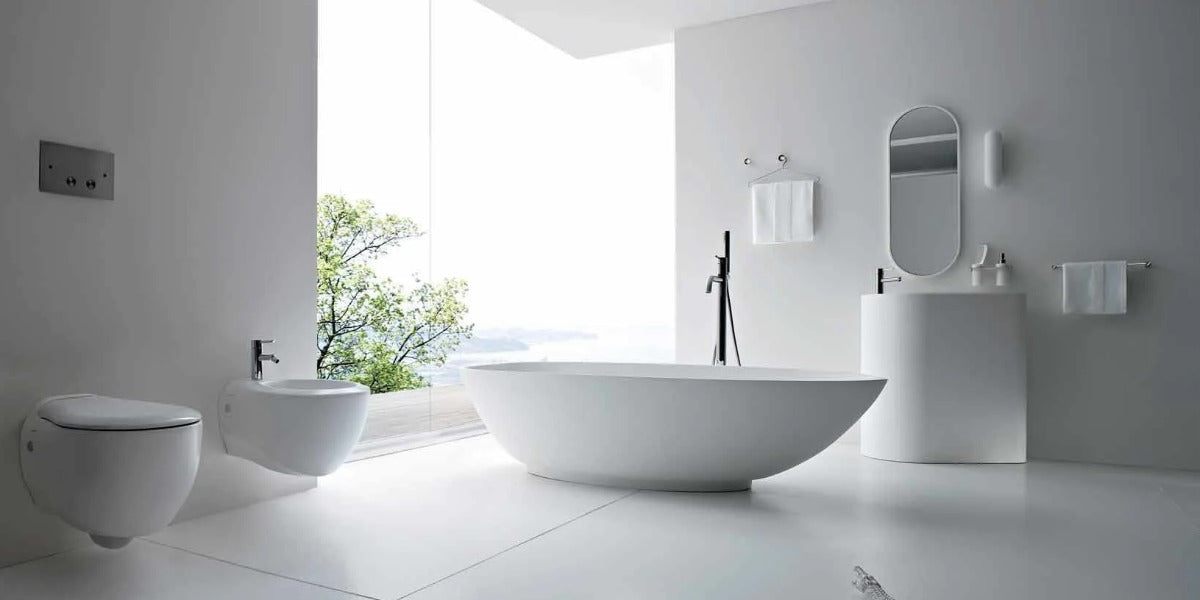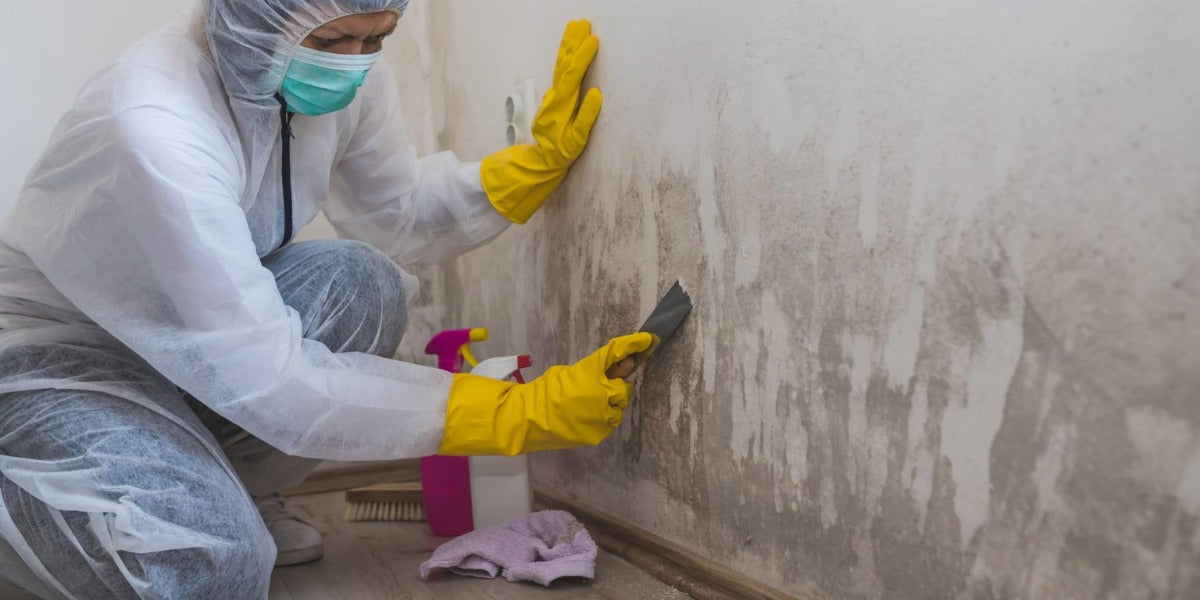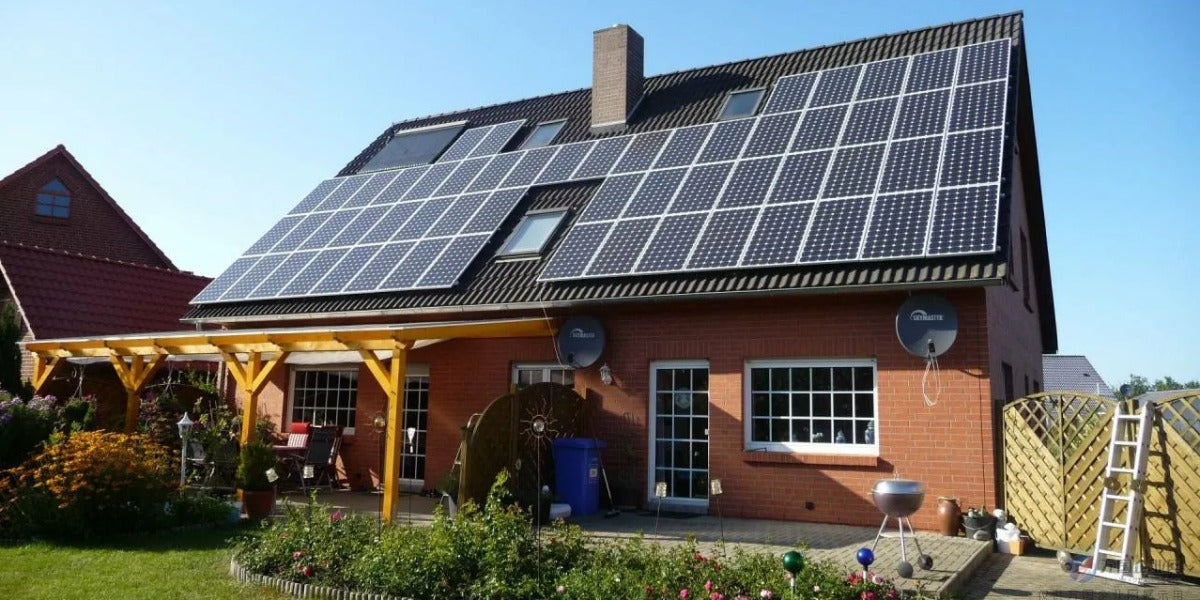According to the EPA, the Us Environmental Protection Agency, "There is no practical way to eliminate all mold and mold spores in the indoor environment; the way to control indoor mold growth is to control moisture.”
So if you just sighted mold on your bathroom walls or bathroom or you can smell the disgust, you’re not alone here. As of 2023, it was found that At least 45 million buildings in the United States have unhealthy levels of mold. And unfortunately, the most common place for mold to grow in homes is the bathroom, with 70% of bathrooms containing some form of mold.
We hope that eases you a bit knowing mold on bathroom walls is quite a common problem. But if you’re still worried, let's be clear. You can clean most types of mold on bathroom walls without hiring experts as far as it’s not a huge manifestation.
You might already know that unsightly mold on bathroom walls isn't just an eyesore but a potential health hazard. Mold has been confirmed by the CDC (Centers for Disease Control and Prevention), to cause infections in the lungs, skin, and other organs. Some types of mold can even cause serious systemic infections in people with weakened immune systems.
Just like mosquitoes who breed in damp areas, that’s the same way mold behaves in humid environments but in a more covert way that you might leave it unattended to. Ignoring mold on bathroom walls will only worsen and potentially spread. That’s the justification for you to act as soon as you can.
Because that’s not still half of the damage caused by molds, but let’s give you what you’re here for. Don't despair if you see mold! We'll walk you through how to remove mold from bathroom walls step by step.
Learn how to remove mold from bathroom walls now and you might save money, time, health, and your home. Essentially, it becomes part of your skillset as a homeowner. This guide covers everything you need to know about how to remove mold from bathroom walls effectively to improve your air quality.
Common Bathroom Mold Types You Should Know
If you notice a musty smell or discolored patches, there might be mold in the bathroom walls. But before proceeding to act yourself, you have to know if it’s one you can probably handle yourself.
Here's a quick rundown on the most common types of molds you might find lurking on your bathroom walls:
The DIY-Friendly Molds
Cladosporium: This widespread mold often appears in circular patches of olive green, brown, or black. It's frequently found around tubs, drains, and on damp surfaces like drywall and wallpaper. While it can trigger allergy symptoms in some people, it's generally considered less toxic. For mold removal in bathroom settings, a simple solution of diluted bleach, vinegar, or baking soda is often sufficient for this type of mold in the bathroom walls.
Penicillium: You might recognize this one from moldy bread, but it can also thrive in bathrooms on window frames, drywall, and plumbing fixtures. You can easily identify it by its bluish-green, fuzzy texture. A vinegar solution or a borax-based cleaner are among the best mold remover for walls for this type of mold. DIY mold removal in bathroom areas with penicillium is often successful.
Aureobasidium: This mold is a frequent visitor to shower areas, feeding on soap scum and shampoo residue. Look for white, pink, or orange patches with a slimy texture in grout lines, on shower curtains, and around drains. In its early stages, baking soda paste or hydrogen peroxide solution are effective for bathroom mold removal of aureobasidium on surfaces like grout, shower curtains, and drains.
The Molds That Might Need a Pro
While some types of mold in the bathroom walls can be handled with DIY methods, others require professional intervention.
Black Mold (Stachybotrys Chartarum): While not all mold is toxic, the discovery of black mold in bathroom wall crevices warrants immediate action. This infamous mold is notorious for its potential health hazards.
Its black, slimy appearance and musty odor often signal a serious moisture problem, like a hidden leak. Black mold in bathroom wall spaces can pose serious health risks, like respiratory difficulties, chronic headaches, fatigue and depression. If you suspect you have black mold in bathroom wall cavities, it's crucial to consult a professional for safe removal.
Trichoderma: is a versatile mold often found near plumbing leaks and changes color throughout its life cycle. It typically affects only those with allergies or compromised immune systems. Some strains are resistant to antifungal treatments, making removal challenging.
Chaetomium: is a more dangerous mold that thrives in extremely wet conditions, often requiring professional intervention. It appears white initially but matures into a blue-green, dark brown, or black hue with a distinct musty smell. In severe cases, chaetomium can cause serious illness.

Other Common Bathroom Molds (Potentially DIY, but use caution)
Aspergillus: is a common indoor mold that can cause severe allergic reactions and respiratory issues. It comes in various species and colors. While small patches may be treatable with household cleaners, it's best to consult a professional.
Alternaria: is a dark green or brown mold with a velvety texture that often appears on water-damaged surfaces. It can trigger allergies but is less likely to cause severe health problems. DIY removal is often possible with bleach or commercial mold removers.
Ulocladium: is a mold that thrives in damp conditions and can be mistaken for black mold. It can cause health issues, especially for those with weakened immune systems. Small patches might be removable with household cleaners, but larger infestations may require professional help.
Important note: This is just a starting point. If you're unsure about the type of mold you're facing or if it's spread extensively, always consult a professional for safe and effective removal.
Remember: Even if you're dealing with a seemingly harmless mold, it's important to address the underlying moisture problem that's causing it to grow. Proper ventilation, regular cleaning, and fixing any leaks are key to preventing mold from returning and taking over your bathroom.
Tools, Materials and Safety Measures
Like every farmer that goes to the farm with his hoe and cutlass, you also must equip yourself with the right tools and materials. From safety tools down to the materials you will be using for bathroom mold removal.
Cleaning Solutions like Vinegar, baking soda, hydrogen peroxide, etc.
Tools like buckets, towels/rags, spray bottles, scrub brush or sponge, squeegee
Safety tools like rubber gloves, safety goggles, face masks (preferably N-95 or P-100 respirators)
HEPA Air Scrubber (Highly Recommended): To improve air quality and to filter mold spores from the air and prevent their spread while you're cleaning.
Additional Supplies and Precaution tips:
Ventilation Fan: To improve ventilation and help dry surfaces faster.
Dehumidifier: To reduce moisture levels in the bathroom.
Painter's Tape: To protect trim and other areas you don't want to get cleaning solutions on.
Plastic Sheeting: To cover floors and fixtures.
How to Remove Mold from Bathroom Walls
The key to effective bathroom mold removal lies in understanding the type of surface you're dealing with. Each material requires a slightly different approach to banish mold and prevent its return. Here's how to tackle the most common bathroom wall types:
Tiled Walls (Grout and Tile)
Bleach(for White Grout Only): Mix one part bleach with three parts water. Wearing gloves and eye protection, apply the solution to the moldy areas with a spray bottle or sponge. Let it sit for 15-20 minutes, then scrub with a stiff brush and rinse thoroughly with water. Ensure good ventilation while using bleach.
Vinegar(for All Grout Colors): Fill a spray bottle with undiluted white vinegar. Spray generously on the moldy grout and tiles. Let it sit for at least one hour, then scrub with a brush and rinse with water. You can repeat this process if necessary.
Baking Soda(for All Grout Colors): Make a paste by mixing baking soda with a small amount of water. Apply the paste to the moldy areas and let it sit for 10-15 minutes. Then, scrub with a damp sponge or brush and rinse thoroughly. Vinegar or baking soda solutions can be the best mold remover for walls with mildew or aureobasidium growth.
Commercial Mold Removers: Many commercial cleaners require you to spray the solution, let it sit for a specified time, and then scrub and rinse. Always wear gloves and ensure good ventilation when using these products. For more extensive or persistent mold, a commercial mold remover may be the best mold remover for walls but always follow safety instructions carefully.
Pro Tip: If you have colored grout, opt for vinegar or baking soda instead of bleach to avoid fading. Also, consider using a HEPA air scrubber after cleaning to remove any lingering mold spores from the air and prevent further growth.

Painted or Wallpapered Walls
For these surfaces, the best mold remover for walls will depend on the type of paint or wallpaper. If you notice a musty smell, discoloration, or damp spots, mold might be lurking behind the surface.
Borax-Vinegar Solution: Mix two tablespoons of borax, ¼ cup of white vinegar, and two cups of hot water. Spray mold, scrub, and rinse. This is often the best mold remover for walls with wallpaper.
Diluted Bleach: For non-porous paints, you can use a diluted bleach solution (one part bleach to ten parts water). However, always test it in a hidden area first to check for discoloration.
Remember to thoroughly dry the wall after cleaning to prevent the mold from returning. A HEPA air scrubber can also aid in bathroom mold removal by filtering out airborne spores that could re-infect the area.
Drywall
If your bathroom walls are not constructed from moisture-resistant drywall, then it will be prone to mold due to their porous nature. Mold on drywall can often be identified by discoloration, a musty odor, or a soft, spongy feel.
Mild Cases(Surface Mold): If the mold growth is minimal and hasn't penetrated deeply, you can use a vinegar solution, baking soda paste, or a diluted bleach solution (test in a hidden area first). Spray or apply the solution to the mold and let it sit for 10-15 minutes, then scrub and dry thoroughly.
Extensive or Recurring Mold: If the mold is widespread, recurring, or has caused the drywall to become soft or crumbly, it's crucial to consult a professional. They can assess the damage and determine the best course of action, which may involve removing and replacing the affected drywall.
In all cases, addressing the underlying moisture problem is crucial for preventing mold from returning. Here are…
Key prevention methods that will silence mold in your home
Prevention is key to keeping your bathroom mold-free. According to the EPA, the US Environmental Protection Agency, "There is no practical way to eliminate all mold and mold spores in the indoor environment; the way to control indoor mold growth is to control moisture.”
So, the only method that will keep your home and environment mold-free is prevention.
Here is how to prevent mold on your bathroom walls and in your home:
Ensure Proper Ventilation:
After a steamy shower or bath, leave the bathroom door slightly unlocked and open the window for at least 20 minutes. If you have an exhaust fan, run it for the same duration to help clear the air of excess moisture.
Promptly Fix Leaks:
A dripping faucet or leaky pipe might seem minor, but it provides a constant source of moisture that mold loves. Don't delay repairs; address any leaks as soon as you discover them.
Keep Humidity Levels Low:
In humid climates or bathrooms prone to dampness, consider using a dehumidifier to maintain optimal humidity levels (ideally between 30% and 50%). A moisture-absorbing desiccant can also help in smaller spaces.
Dry everything:
After showers, wipe tiles and glass surfaces with a squeegee or towel. Hang towels to dry promptly after use, and don't leave wet bath mats or washcloths on the floor.
Clean regularly with mold-inhibiting products:
Make deep cleaning your bathroom a weekly habit. Use a cleaning solution specifically designed to kill mold and mildew, paying special attention to grout lines, corners, and crevices where moisture tends to linger.
Mold-resistant paint:
When repainting your bathroom, opt for mold-resistant paint. It contains additives that inhibit mold growth, providing an extra layer of protection.
Background Air Purification
The last prevention tip is acquiring an automated air filter that runs in the background 24/7 fighting molds for you. It can be in your kitchen, living room, bathroom, or wherever you want. It clears the air within 5 minutes of usage.
While you clean, this model can filter out the spores released into the air preventing them from settling on surfaces and starting new colonies. This means you won’t have to do the same stressful cleaning again.
You’ll be living a better life right in your home while our air scrubbers eliminate mold spores from the air. Click this link now to claim exclusive bonuses on our ETL-certified HEPA air scrubbers.









Shop For Dehumidifier